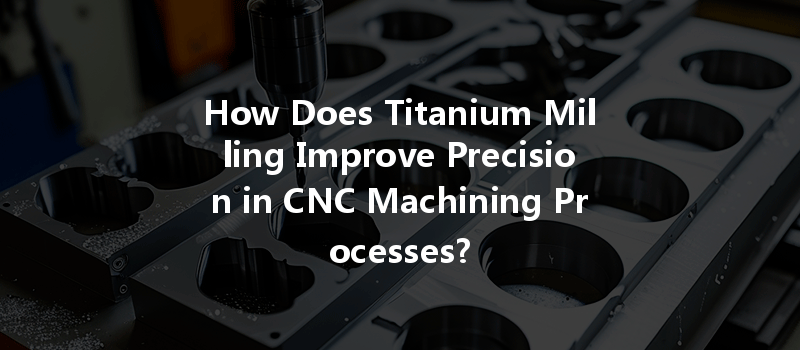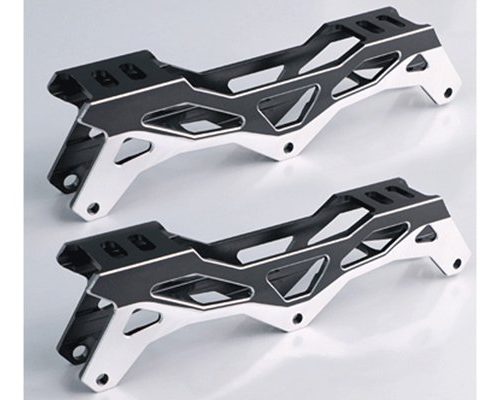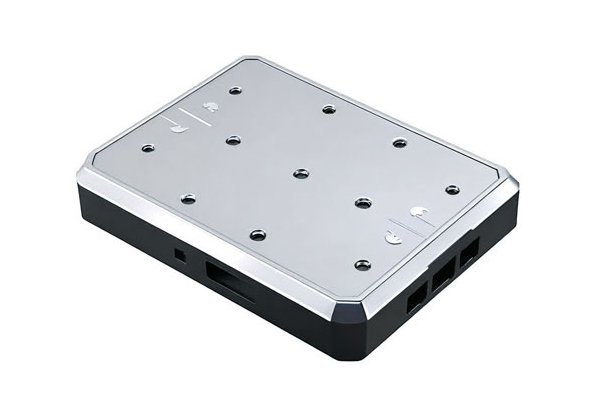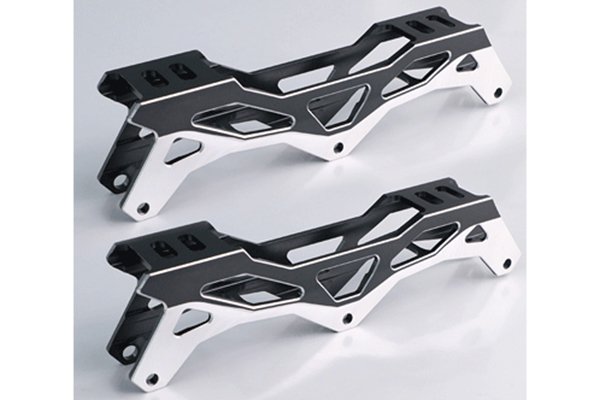Imagine standing before a massive piece of machinery, the hum of motors filling the air as you watch sparks fly from a spinning tool, gracefully gliding across a block of metal. This image captures the essence of modern milling—especially when it comes to titanium milling. If you’re delving into the world of advanced manufacturing, you might be wondering: what is titanium milling, and why is it such a buzzword in the industry today? Trust me, you’re in for an enlightening ride!
In this comprehensive guide, we’ll explore the ins and outs of titanium milling. We’ll break down what it is, its advantages, processes involved, machining techniques, and its critical role in various industries. Get ready for a deep dive into the world of precision metalworking, enhanced by vivid examples and clear explanations!
What is Titanium Milling?
At its core, titanium milling is a machining process used to create precise and intricate shapes from titanium metal. Just think of titanium as the superhero of metals—strong, lightweight, and corrosion-resistant. But don’t let its strength fool you; titanium poses unique challenges in milling due to its hardness and tendency to react with cutting tools.
But fear not! Upon mastering the art of titanium milling, manufacturers unlock a treasure trove of benefits, including accuracy, durability, and the ability to create complex geometries. So, why is titanium milling an essential skill for machinists? Let’s break it down further.
Why Choose Titanium?
It’s no surprise that titanium has become a go-to material in several industries, from aerospace to medical devices. Still perplexed about why it’s so popular? Here are some key reasons:
Now that we’ve established why titanium is loved, let’s dive into the process of titanium milling.
The Titanium Milling Process
Think of titanium milling as an art form—a blend of science and craftsmanship. Here’s how the process generally unfolds.
Before diving into milling, you need to select the right titanium alloy. Grade 5 titanium, consisting of 90% titanium, 6% aluminum, and 4% vanadium, is the most popular for its great strength and machinability. However, depending on your application, other grades might be more suitable.
Choosing the right tools is like picking the perfect paintbrush for your masterpiece. High-speed steel and carbide tools are common in titanium milling due to their durability and heat resistance. Remember, the choice of tooling can make or break the milling process.
The setup phase involves mounting the titanium piece onto a milling machine, aligning it with precision. When it’s time to start cutting, the machine uses rotary cutters to remove excess material and shape the titanium into the desired form.
Now here’s where it gets really interesting! Titanium generates significant heat during the milling process. Implementing effective cooling techniques, such as flood cooling or mist cooling, is essential. This helps reduce tool wear and maintains the integrity of the titanium. It’s like watering a plant—it needs that care to thrive!
Once the rough shape is achieved, finishing operations like sanding or polishing enhance the final product. This process not only improves aesthetics but also ensures tight tolerances are met.
Machining Techniques for Titanium Milling
Now that you have a grasp on the milling process, let’s explore some exciting techniques that can enhance the titanium milling experience.
CNC Milling
Computer Numerical Control (CNC) milling is a game-changer in the titanium world. It allows for unparalleled precision and repeatability. Imagine having a virtual assistant who follows your exact instructions to the letter—only this assistant is an advanced machine! CNC mills can handle complex designs with ease, making them perfect for intricate titanium parts.
High-Efficiency Milling
This innovative approach involves using advanced strategies to enhance material removal rates. Think of it as turbo-charging your car for a faster ride. By optimizing tool paths and speeds, machinists can achieve better results in less time, which can spell significant savings for manufacturers.
Adaptive Machining

In adaptive machining, the cutting process is continuously monitored and adjusted in real time. Imagine a chef tasting their dish while cooking, making tweaks to ensure perfection. That’s what adaptive machining is all about—it helps mitigate tool wear and improves overall performance, leading to better outcomes in titanium milling.
Advantages of Titanium Milling
You might be wondering, “Is it worth the investment?” Absolutely! Getting into titanium milling offers numerous advantages:
Challenges in Titanium Milling
While titanium milling offers numerous benefits, it’s not all sunshine and rainbows. There’s a darker side to consider—some challenges come with the territory:
Industries Utilizing Titanium Milling
If you’ve ever marveled at a titanium airplane wing soaring through the sky or admired a titanium knee implant, you’ve witnessed the astounding applications of titanium milling. Here are some industries where this technology shines:
Aerospace
In aerospace, every ounce counts. Titanium components are used in airframes and engines due to their strength-to-weight ratio. Remember, when you’re high above the ground, you want the best materials flying with you!
Medical
Titanium has found its home in the medical world, especially in implants. Precision titanium milling ensures these life-changing devices fit perfectly in their new home—the human body.
Automotive
The automotive industry is hopping on the titanium bandwagon, particularly in high-performance vehicles. Lighter cars mean better performance and fuel efficiency, giving drivers that thrill.
Marine Engineering
Thanks to its corrosion resistance, titanium parts are ideal for marine applications. Whether it’s boat fittings or submersible components, titanium ensures durability against harsh oceanic conditions.
The Future of Titanium Milling
As we look to the future, titanium milling continues to evolve. With advancements in technology, such as automation and artificial intelligence, the potential for greater precision and lower costs beckons. Who knows? You might soon be watching a robot effortlessly mill titanium while you sip your coffee and discuss your plans for world domination.
Moreover, research into new titanium alloys may pave the way for even more versatile applications, ensuring that titanium remains a top choice for industries worldwide.
Conclusion: Navigating the Future of Titanium Milling
Titanium milling is like a well-written symphony—each process, tool, and technique plays a critical role in creating harmonious results. As we’ve explored, titanium holds remarkable advantages that make it a sought-after material in various industries. However, it’s important to navigate the challenges of milling with care.
Whether you’re a seasoned machinist or just getting started, understanding titanium milling opens up a world of possibilities. By staying informed about techniques and trends, you’re better equipped to thrive in this dynamic landscape.
So, what are you waiting for? Embrace the riveting world of titanium milling and unleash your potential for precision and innovation! Are you ready to create masterpieces from this remarkable metal? Let your imagination run wild!



